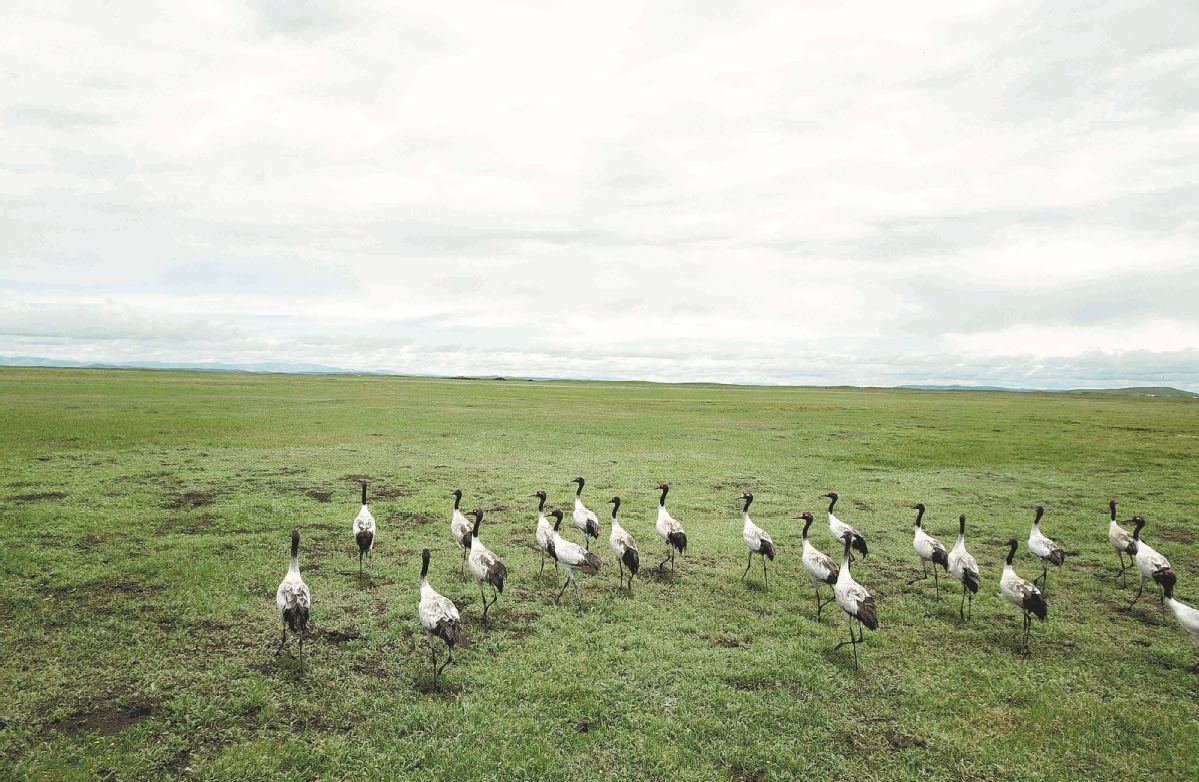Wetlands protection reaps rich rewards






Birds benefit from vastly improved environment in Yellow River Delta
Deep into autumn, flocks of migratory birds arrive in quick succession in the Yellow River Delta in Dongying, Shandong province.
Late last month, large numbers of birds were seen resting on ponds beside a road more than 10 kilometers from the Yellow River Delta National Nature Reserve, which has been dubbed an "international airport for avian species".
At the reserve, flocks of birds flew across the sky and whooper swans glided slowly over the surface of lakes, while other birds chirped in the woods.
Zhao Yajie, who has monitored the condition of the birds for the reserve's management committee for seven years, said the Yellow River Delta, one of the largest in China, has a temperate, semi-humid continental monsoon climate. It is a place for millions of birds to breed and is also a winter stopover for them.
"Last year, about 6 million birds stopped over at the reserve, including rare species such as the red-crowned crane and the Saunders's Gull," Zhao said, adding that flamingos and white pelicans were observed there for the first time last year.
Meanwhile, in Gansu province, Wang Jiayang, who works for a management and protection center station at Yellow River First Curve National Nature Reserve in Maqu county, Gannan Tibetan autonomous prefecture, said that in November last year some 30,000 birds stopped over at the reserve's wetlands. It was the first time that so many birds had been witnessed at the venue, which is located on the upper reaches of the waterway.
Gou Hongshui, director of the Yellow River Delta National Nature Reserve's management committee from 2019 to May this year, said: "Birds know whether an environment is good or not. Increasing numbers of migratory species are stopping over at the reserve. Some make it their home all year-good evidence that the delta's ecological system is constantly improving."
Rising in the Bayan Har Mountains in Qinghai province, the Yellow River, China's second-longest, flows through a plateau blanketed with fine, windblown soil. Millions of tons of soil are carried east by the river every year, with some of it reaching the estuary, where the waterway flows into the Bohai Bay in Dongying, forming a large expanse of wetlands.
In the 1980s and '90s, coastal erosion, seawater encroachment and droughts caused the wetlands to shrink.
The delta's rich wetland ecosystems are also seriously threatened by rapid urbanization, oil and industrial waste pollution, and unprecedented land reclamation, according to the reserve's management committee.
To protect the wetlands, the reserve was established in 1992. It covers about 153,000 hectares, with the wetlands comprising 70 percent of the total.
President Xi Jinping, who is also general secretary of the Communist Party of China Central Committee, inspected the Yellow River estuary, including the reserve, on Oct 20.
He checked the river's tributaries, the wetlands' environment and learned about ecological protection and high-quality development in the Yellow River Basin.



















